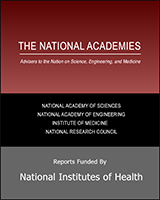From: Summary

Preventing Mental, Emotional, and Behavioral Disorders Among Young
People: Progress and Possibilities.
National Research Council (US) and Institute of Medicine
(US) Committee on the Prevention of Mental Disorders and Substance Abuse Among
Children, Youth, and Young Adults: Research Advances and Promising
Interventions; O'Connell ME, Boat T, Warner KE, editors.
Washington (DC): National Academies Press (US); 2009.
Copyright © 2009, National Academy of
Sciences.
NCBI Bookshelf. A service of the National Library of Medicine, National Institutes of Health.